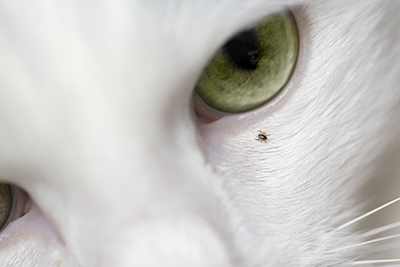
What is Cytauxzoon felis?
Cytauxzoon felis may not be a well-known parasite, but it is often a deadly one. Found mainly in the Southeastern United States, this blood parasite is often commonly referred to as “Bobcat Fever” since bobcats are considered to be the natural hosts. Cytauxzoon felis is spread to bobcats and domestic cats by ticks.
According to the Companion Animal Council, the disease is most often observed “between March and September, when the tick vectors are active.”
Where is Cytauxzoon felis found?
The lone star tick, Amblyomma americanum, is considered to be the main vector of Cytauxzoon felis. The disease has been reported in domestic cats in the states of:
- Arkansas
- Florida
- Georgia
- Kansas
- Kentucky
- Illinois
- Louisiana
- Mississippi
- Missouri
- North Carolina
- Ohio
- Oklahoma
- South Carolina
- Tennessee
- Texas
- Virginia
Symptoms of Cytauxzoon felis
While bobcats, the natural hosts, are typically asymptomatic, domestic cats are not so lucky. After being bitten by a tick carrying this protozoan parasite, domestic cats typically show signs within 5-14 days.
Infected cats often present with:
- Depression
- Lethargy
- Anorexia
- Fever
- Dehydration
Unfortunately, the disease progresses quickly and affected cats can die within 2-3 days without treatment. Although research suggests that some cats may survive acute infection to become subclinically infected and serve as reservoirs for the disease.
Diagnosis of Cytauxzoon felis
Cytauxzoon felis is diagnosed by the microscopic observation of piroplasms (the blood parasite) in blood and/or PCR testing.
Treatment of Cytauxzoon felis
Infected cats are typically treated with anti-parasitic drugs and supportive care, which may include intravenous fluids, blood transfusions and nutritional support. Unfortunately, even with aggressive treatment, many affected cats don’t survive.
Promising research into Cytauxzoon felis
Veterinary researcher Dr. Leah Cohn from the University of Missouri College of Veterinary Medicine, in collaboration with Dr. Adam Birkenheuer and Dr. David Bird from North Carolina State University are currently studying new medications. They are evaluating the use of medications that have been effective at treating other types of protozoan infections. Their promising studies have “raised the Cytauxzoonosis survival rate from less than 25 percent to 60 percent,” according to the North Carolina State website. Dr. Cohen and Dr. Birkenheuer are also hoping to develop a vaccine for this rare but deadly disease in the future.
Prevention of Cytauxzoon felis
Since there is no vaccine to prevent Cytauxzoon felis, the best way to protect your cat is to minimize his risk of exposure. Keeping your cat indoors and away from the reach of ticks is the most effective preventive-measure. If your cat must go outside, use a veterinary approved feline tick preventative product, and check daily for ticks. Indoor cats in households with dogs should also be checked daily or placed on preventative to minimize risk. Quick and effective tick removal is important.
Questions for your veterinarian:
- Why should my cat stay indoors?
- If I find a tick on my cat what is the best way to remove it?
- Should I consider tick prevention if I have an indoor cat that lives with a dog that goes outside?
If you have any questions or concerns, you should always visit or call your veterinarian -- they are your best resource to ensure the health and well-being of your pets.
